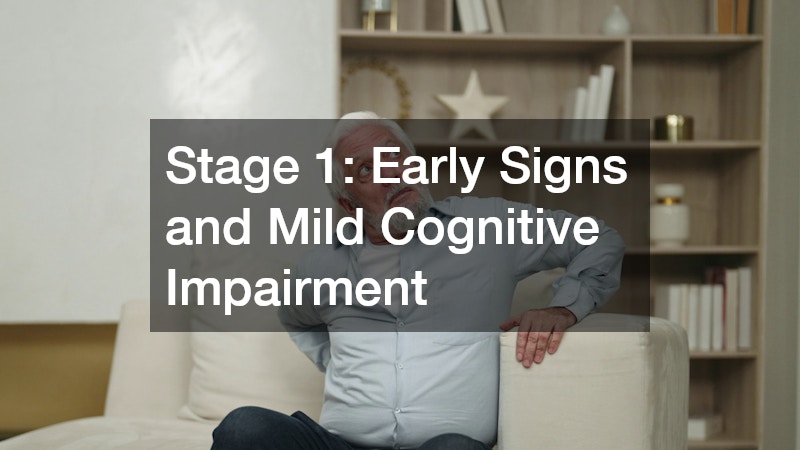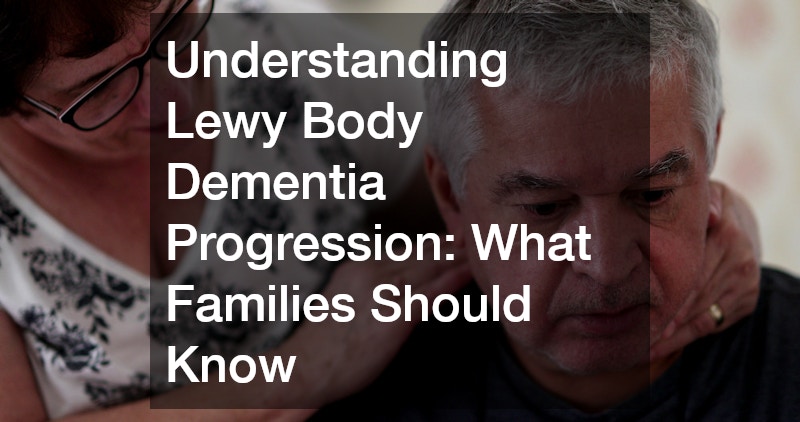Lewy Body Dementia (LBD) is one of the most complex and misunderstood forms of progressive dementia, second only to Alzheimer’s in prevalence. Affecting thinking, movement, behavior, and mood, LBD can be especially challenging for families to navigate due to its fluctuating symptoms and overlapping features with Parkinson’s and Alzheimer’s disease. When a loved one is diagnosed or begins showing signs of LBD, understanding how the condition progresses is crucial for making informed care decisions, planning ahead, and offering emotional support.
This guide is designed for families caring for seniors with LBD or those concerned about cognitive changes in a loved one. We’ll explore the stages of Lewy Body Dementia progression, common symptoms, treatment options, and caregiving tips to help you stay prepared and compassionate through every phase of the journey.
What is Lewy Body Dementia?
Lewy Body Dementia is a progressive neurological disorder caused by the abnormal buildup of alpha-synuclein proteins—known as Lewy bodies—in the brain. These proteins disrupt the brain’s normal functioning, especially in areas that control thought, movement, and emotion.
There are two main types of LBD:
- Dementia with Lewy Bodies (DLB): Cognitive symptoms appear before or alongside motor symptoms.
- Parkinson’s Disease Dementia (PDD): Parkinson’s symptoms are present for at least a year before cognitive decline begins.
Key Symptoms of LBD
- Visual hallucinations
- Parkinsonian movement (shuffling gait, tremors)
- Sleep disturbances (REM sleep behavior disorder)
- Cognitive fluctuations
- Depression and anxiety
- Autonomic dysfunction (blood pressure changes, bladder issues)
Understanding the unique characteristics of LBD can help families distinguish it from other types of dementia and better anticipate the road ahead.
How Does Lewy Body Dementia Progress Over Time?
Lewy Body Dementia is a progressive disease, meaning symptoms worsen over time. However, the speed and pattern of progression vary widely between individuals. On average, people live 5 to 8 years after diagnosis, but some may live up to 20 years with proper care.
Factors Affecting Progression
- Age at onset (younger onset may indicate slower decline)
- Overall physical health
- Coexisting conditions (e.g., cardiovascular disease, diabetes)
- Access to supportive care and therapies
Despite its variability, LBD often progresses in identifiable stages, each with its own set of challenges.
Stage 1: Early Signs and Mild Cognitive Impairment

At this stage, symptoms are subtle and may be mistaken for normal aging or mild depression. Families may notice changes, but a formal diagnosis is often elusive.
Early Symptoms
- Occasional memory lapses
- Difficulty concentrating
- Sleep disruptions (acting out dreams)
- Minor mood swings
- Unexplained changes in gait or posture
- Confusion or disorientation in familiar places
These symptoms may come and go, making diagnosis difficult. If you’re concerned, consult a neurologist or geriatric specialist for a cognitive assessment.
Stage 2: Mild to Moderate Decline
As LBD progresses, symptoms become more consistent and start to interfere with daily living.
Common Symptoms in This Phase
- Regular visual hallucinations
- Pronounced fluctuations in alertness (e.g., “good” and “bad” days)
- Increasing difficulty with tasks like managing finances or cooking
- More noticeable movement issues (rigidity, shuffling walk)
- Worsening REM sleep behavior disorder
- Sensitivity to certain medications, especially antipsychotics
What Families Should Do
- Consider home safety adjustments (non-slip mats, grab bars)
- Begin legal and financial planning
- Discuss long-term care preferences
- Learn about medications that may improve symptoms (e.g., cholinesterase inhibitors)
Support groups and educational resources can be valuable during this phase.
Stage 3: Moderate to Severe Impairment
In this stage, both physical and cognitive symptoms worsen, and full-time care may become necessary.
Symptoms to Expect
- Frequent hallucinations and delusions
- Inability to perform self-care (dressing, bathing)
- Increased risk of falls
- Incontinence
- Swallowing difficulties
- Severe confusion, especially in the evening (sundowning)
Caregiving Considerations
- Explore professional in-home care or memory care facilities
- Monitor for aspiration risk during meals
- Maintain routines to reduce anxiety
- Use validation techniques rather than correcting delusions
- Watch for signs of caregiver burnout
Communication may become more difficult, so using gestures and calming tones can help reduce frustration.
Stage 4: End-of-Life Stage
The final stage of Lewy Body Dementia progression is marked by profound disability. Cognitive awareness may be minimal, and mobility is often lost.
End-Stage Symptoms
- Inability to communicate
- Bedridden or near-total immobility
- Severe difficulty swallowing
- Frequent infections (e.g., pneumonia, UTIs)
- Complete dependence on caregivers
Planning for End-of-Life Care
- Coordinate with palliative care or hospice services
- Focus on comfort, pain management, and dignity
- Address the spiritual and emotional needs of both the patient and family
- Consider music therapy, gentle massage, or familiar scents for comfort
This is an emotional stage for families. Be gentle with yourself and seek support from professionals and loved ones.
Lewy Body Dementia Progression and Its Emotional Toll
Understanding Lewy Body Dementia progression isn’t just about knowing symptoms—it’s about navigating emotional realities. The unpredictable nature of LBD can leave families feeling constantly on edge, never knowing what each day will bring.
Emotional Challenges Families Face
- Grieving the gradual loss of the person they knew
- Caregiver stress and fatigue
- Navigating behavioral changes like aggression or paranoia
- Balancing caregiving with work or parenting responsibilities
- Struggling with social isolation
Coping Strategies
- Join LBD-specific support groups
- Practice self-care (rest, exercise, breaks)
- Use counseling or therapy for emotional support
- Educate friends and extended family to build a care network
Accepting help, even temporarily, is a form of strength, not weakness.
Treatment Options and Symptom Management

While there is currently no cure for Lewy Body Dementia, several treatments can help manage symptoms and improve quality of life.
Medications
- Cholinesterase inhibitors (e.g., Rivastigmine): Help with memory and cognition
- Levodopa: Improves movement but may worsen hallucinations
- Melatonin or clonazepam: For REM sleep disorder
- SSRIs: For depression or anxiety
Avoid traditional antipsychotics unless absolutely necessary. They can worsen symptoms and cause severe reactions in LBD patients.
Non-Drug Therapies
- Physical and occupational therapy
- Cognitive stimulation therapy
- Music and art therapy
- Speech therapy for swallowing and communication
Collaborate with a multidisciplinary care team to customize a care plan that supports both the patient and the family.
How to Talk to a Loved One About Their Diagnosis
Conversations about dementia can be deeply emotional. When discussing a potential or confirmed diagnosis, consider the following:
Tips for a Compassionate Discussion
- Choose a calm, quiet setting
- Use clear, simple language
- Emphasize love and support
- Reassure them that you’ll be there for them
- Be prepared for denial, sadness, or confusion
Allow them space to process and revisit the conversation as needed.
Preparing for the Future: Legal and Financial Planning
Planning ahead ensures that your loved one’s wishes are honored and that you’re not caught off guard by future needs.
Key Documents to Prepare
- Power of attorney (financial and medical)
- Advance healthcare directive
- Living will
- Guardianship or conservatorship (if needed)
Speak with an elder law attorney to help navigate the complexities and make legally sound decisions.
Tips for Improving Quality of Life During Lewy Body Dementia Progression
Even as LBD progresses, many actions can help improve daily comfort, maintain dignity, and enhance emotional well-being. While the disease can’t be reversed, small changes to the living environment and routines can make a significant difference for both the patient and caregiver.
Strategies for Quality of Life:
- Create a calm and structured environment: Minimize clutter and noise, and use familiar objects to reduce confusion.
- Establish consistent routines: Repetition helps reinforce memory and reduces anxiety.
- Encourage physical activity: Guided stretching, short walks, or chair exercises promote circulation and joint health.
- Stay socially engaged: Visits from loved ones or community programs can uplift mood and reduce isolation.
- Use adaptive tools: Large-button phones, non-slip utensils, and mobility aids make daily tasks safer and easier.
Warning Signs That Indicate a Shift to a New Stage
Recognizing when your loved one is entering a new phase of LBD progression is crucial for updating care plans and anticipating challenges. While changes can be gradual, some signs suggest a transition to more advanced stages of the condition.
Signs to Watch For:
- Frequent falls or unsteadiness – Indicates increased motor impairment.
- Longer periods of confusion or disorientation – Suggests declining cognitive reserve.
- Loss of interest in food or difficulty swallowing – May indicate approaching late-stage progression.
- Delusions becoming more intense or distressing – A sign of worsening psychosis.
- Decreased responsiveness or withdrawal – Often seen in later stages.
When these symptoms appear, it’s time to reassess safety needs, care options, and communication strategies.
Common Misdiagnoses of Lewy Body Dementia: What to Clarify with Your Doctor
Lewy Body Dementia is frequently misdiagnosed, particularly in its early stages, due to overlapping symptoms with Alzheimer’s, Parkinson’s, and psychiatric conditions. Early and accurate diagnosis is key to avoiding harmful treatments and planning appropriate care.
Conditions Often Mistaken for LBD:
- Alzheimer’s disease – Memory loss dominates early on in Alzheimer’s, but not always in LBD.
- Parkinson’s disease – LBD may include Parkinson-like symptoms, but with earlier cognitive decline.
- Schizophrenia or bipolar disorder – Hallucinations or mood changes may be misinterpreted as psychiatric disorders.
- Depression in elderly patients – LBD can resemble major depressive disorder with apathy and sleep disruption.
If LBD is suspected, request a neuropsychological assessment, brain imaging, and referral to a dementia specialist to confirm the diagnosis.
Building a Long-Term Support System for LBD Caregiving
Caring for someone with Lewy Body Dementia is often a long-term commitment that requires both physical and emotional endurance. Developing a robust support system is essential to avoid burnout and ensure continuity of care throughout all stages.
Ways to Strengthen Your Support Network:
- Involve family and friends early: Delegate tasks like errands, meals, or companionship.
- Connect with LBD organizations: Groups like the Lewy Body Dementia Association offer education, forums, and local resources.
- Use respite care: Short-term care services give primary caregivers time to rest and recharge.
- Attend caregiver support groups: Sharing experiences helps reduce isolation and offers practical solutions.
- Explore professional care options: In-home aides, day programs, and hospice can offer specialized assistance when needed.
Planning support systems ahead of time reduces the feeling of crisis when new stages emerge.
Conclusion: Hope, Compassion, and Preparedness
Navigating Lewy Body Dementia progression is a journey of constant learning, patience, and adaptation. While the road is undeniably challenging, families who educate themselves and build a strong support system can make a world of difference in the quality of life for their loved one.
Remember, you’re not alone—countless families are on this same path. By understanding the disease, preparing for its progression, and showing consistent love and care, you’re doing something profoundly meaningful.


